 The last 18 months have seen a growing crescendo of excitement in the content and mobile phone worlds about the possibilities of delivering TV to mobile phone. The ideas been around a lot longer than that, but it’s the smell of money that has heightened senses.
The last 18 months have seen a growing crescendo of excitement in the content and mobile phone worlds about the possibilities of delivering TV to mobile phone. The ideas been around a lot longer than that, but it’s the smell of money that has heightened senses.
Virgin Mobile have been keen to show the pace in this area and BT Livetime).
The handsets are now in pre-production and are getting into the hands of a few people.
James Cridland, Head of New Media Strategy at Virgin Radio has had a pre-production Virgin Mobile Lobster 770TV in his hands for a while and has written up a review of it, complete with the four TV services and 49 radio stations.
Built by HTC, its guts are an Orange SPV C600 but the protrusion on its right hand side holds the DAB chippery. James reports that the headphones are better than SPV600, which the 770TV is based on. They also act as the aerial for the DAB receiver.
James goes into a lot more detail about the handset, but let’s get down to how it performs as a TV.
The content
The four TV channels he had were BBC One London, Channel 4 Shortcuts, E4, and ITV-1 (only available in London). It sounds like the programming on the commercial channels hits a few interruptions due to ‘rights.’
BBC One London is in full and free. E4 and ITV-1 generally shows a simulcast of the main channels, but at some times of the day you get a notice that the current programme is unavailable for ‘rights reasons’ – which, at the time of writing, includes all of E4’s daytime music programming, all advertising, all of GMTV, and quite a few other programmes too: it’s unusual to be able to get all four channels in full, in my experience. Channel 4 Shortcuts shows short clips of Channel 4 shows.
Using it
Starting to watch TV couldn’t be easier, just hitting the TV button, which brings up the TV Guide, which he describes as a fairly comprehensive EPG (electronic programme guide), interestingly updated over-the-air on DAB.
The quality of the service doesn’t sound amazing currently.
Clicking on a channel name opens a screen with a larger logo and a Windows Media ‘buffering’ sign, which disappears fairly quickly to be replaced with a passable picture. The framerate appears quite low – probably no more than 10 frames a second – and the picture quality does break up in fast movement; this isn’t picture quality to write home about, but conversely it is pretty good at coping with variable signal quality – on occasion, you can sometimes lose the picture but keep the sound. Watching live television in a moving taxi is an interesting experience, but works very well.
Radio service
James is significantly more impressed with this Lobster as a DAB radio, finding “the reception quality is rather better than I’ve experienced with an FM radio,” indeed, “it’s no exaggeration to say that this is the best hand-held DAB Digital Radio that I’ve ever had.”
Given his role at Virgin Radio, he’s a man who knows a thing or two about radio too.
Conclusion
Despite liking the other functions of the Lobster, it appears James won’t be chucking out his TV anytime soon, finding the current channels available not good enough.
I can’t see too many people sitting down for half an hour of Coronation Street on this thing; and it would seem to me that the television offering needs changing – to offer more grazing-friendly programming. Sky News or BBC News 24 would be a great addition. The absence of GMTV on the phone shows what disarray the commercial broadcasters are in – why cede peak commuting time to the BBC alone?
Clearly early days in this fledgling area.
Full details are over on James’ blog
Photo credit: James Cridland
 UK PC vendors Evesham have rolled out what they’re claiming is the smallest and lightest notebook on the market to feature an optical drive.
UK PC vendors Evesham have rolled out what they’re claiming is the smallest and lightest notebook on the market to feature an optical drive.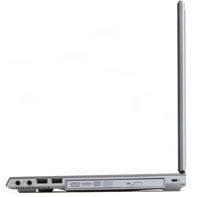 What makes this wee laptop unusual is the fact that Evesham’s engineers have managed to wedge in a DVD/CDRW/Dual Layer DVD-RW drive, instead of offering the usual external optical drive bundled with most small laptops.
What makes this wee laptop unusual is the fact that Evesham’s engineers have managed to wedge in a DVD/CDRW/Dual Layer DVD-RW drive, instead of offering the usual external optical drive bundled with most small laptops.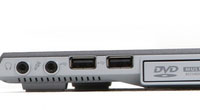 There’s also onboard audio and speakers and a battery life claimed at a healthy five hours, with an optional extended battery ramping uptime to a day-spanning ten hours.
There’s also onboard audio and speakers and a battery life claimed at a healthy five hours, with an optional extended battery ramping uptime to a day-spanning ten hours. Check Point, the makers of the top-notch internet security software ZoneAlarm, have announced that they’ll be moving into the hardware market with the release of a new, high-spec, wireless router.
Check Point, the makers of the top-notch internet security software ZoneAlarm, have announced that they’ll be moving into the hardware market with the release of a new, high-spec, wireless router.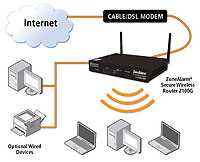 The new router incorporates ZoneAlarm’s stateful packet inspection (SPI) firewall technology, and an intrusion detection and prevention system that actively monitors network traffic to block out hackers and worms.
The new router incorporates ZoneAlarm’s stateful packet inspection (SPI) firewall technology, and an intrusion detection and prevention system that actively monitors network traffic to block out hackers and worms.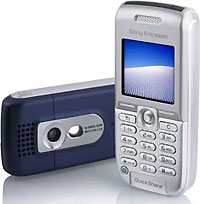 Global sales of camera phones are set to make up nearly half of the total of all mobile phone sales this year, with the figure expected to rise to 81 percent of all phones by 2010.
Global sales of camera phones are set to make up nearly half of the total of all mobile phone sales this year, with the figure expected to rise to 81 percent of all phones by 2010.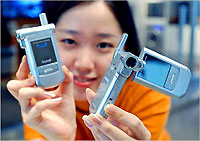 “In 2006, 1.3 and two mega pixel resolutions will become the minimum requirement for mid-tier to high-end phones and a 3.2 mega pixel resolution will be used for flagship products. This will increase to five mega pixels in 2007,” Milanesi said.
“In 2006, 1.3 and two mega pixel resolutions will become the minimum requirement for mid-tier to high-end phones and a 3.2 mega pixel resolution will be used for flagship products. This will increase to five mega pixels in 2007,” Milanesi said. Recently while travelling on an SAS flight, I had the pleasure of trying out the Connexion by Boeing service, which is an Internet service offered on long haul services.
Recently while travelling on an SAS flight, I had the pleasure of trying out the Connexion by Boeing service, which is an Internet service offered on long haul services.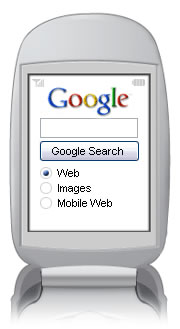 Browsing Gmail, Google’s email service, wasn’t particularly great when you did it from a mobile … until now. With the new release of gmail mobile that was launched today.
Browsing Gmail, Google’s email service, wasn’t particularly great when you did it from a mobile … until now. With the new release of gmail mobile that was launched today. DAB radio pioneers, Pure Technologies, have released information about a forthcoming DAB radio, styled as a Marshall Amp.
DAB radio pioneers, Pure Technologies, have released information about a forthcoming DAB radio, styled as a Marshall Amp. The last 18 months have seen a growing crescendo of excitement in the content and mobile phone worlds about the possibilities of delivering TV to mobile phone. The ideas been around a lot longer than that, but it’s the smell of money that has heightened senses.
The last 18 months have seen a growing crescendo of excitement in the content and mobile phone worlds about the possibilities of delivering TV to mobile phone. The ideas been around a lot longer than that, but it’s the smell of money that has heightened senses. UK rail operator GNER (Great North Eastern Railways) has now completed the installation of Wi-Fi on all is trains, with the company claiming that they now own the world’s largest Wi-Fi fleet.
UK rail operator GNER (Great North Eastern Railways) has now completed the installation of Wi-Fi on all is trains, with the company claiming that they now own the world’s largest Wi-Fi fleet. GNER reckons it will recoup the cost of installing its Wi-Fi service through increased passenger numbers, with the company confident that they’ll be able to tempt car users onto the trains from major metropolitan areas like Leeds, Newcastle and Darlington.
GNER reckons it will recoup the cost of installing its Wi-Fi service through increased passenger numbers, with the company confident that they’ll be able to tempt car users onto the trains from major metropolitan areas like Leeds, Newcastle and Darlington. One thing Metcalfe may not be so encouraged by is the rather parlous state of GNER’s parent company, the Caribbean-based Sea Containers.
One thing Metcalfe may not be so encouraged by is the rather parlous state of GNER’s parent company, the Caribbean-based Sea Containers.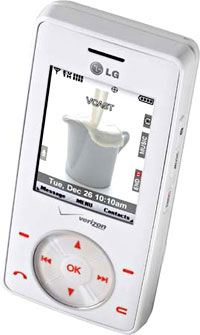 After the success of LG’s Chocolate slider phone (aka the LG KG800), the company have released a new White Chocolate version.
After the success of LG’s Chocolate slider phone (aka the LG KG800), the company have released a new White Chocolate version. Music playback support comes in the shape of WMA and MP3 support with micro-SD memory expansion up to 2GB.
Music playback support comes in the shape of WMA and MP3 support with micro-SD memory expansion up to 2GB. Nokia is to have Mission Impossible 3 released on memory cartridge in parallel with its releases on DVD – making it the world’s first mobile premiere.
Nokia is to have Mission Impossible 3 released on memory cartridge in parallel with its releases on DVD – making it the world’s first mobile premiere. Nokia has been trying very hard to
Nokia has been trying very hard to